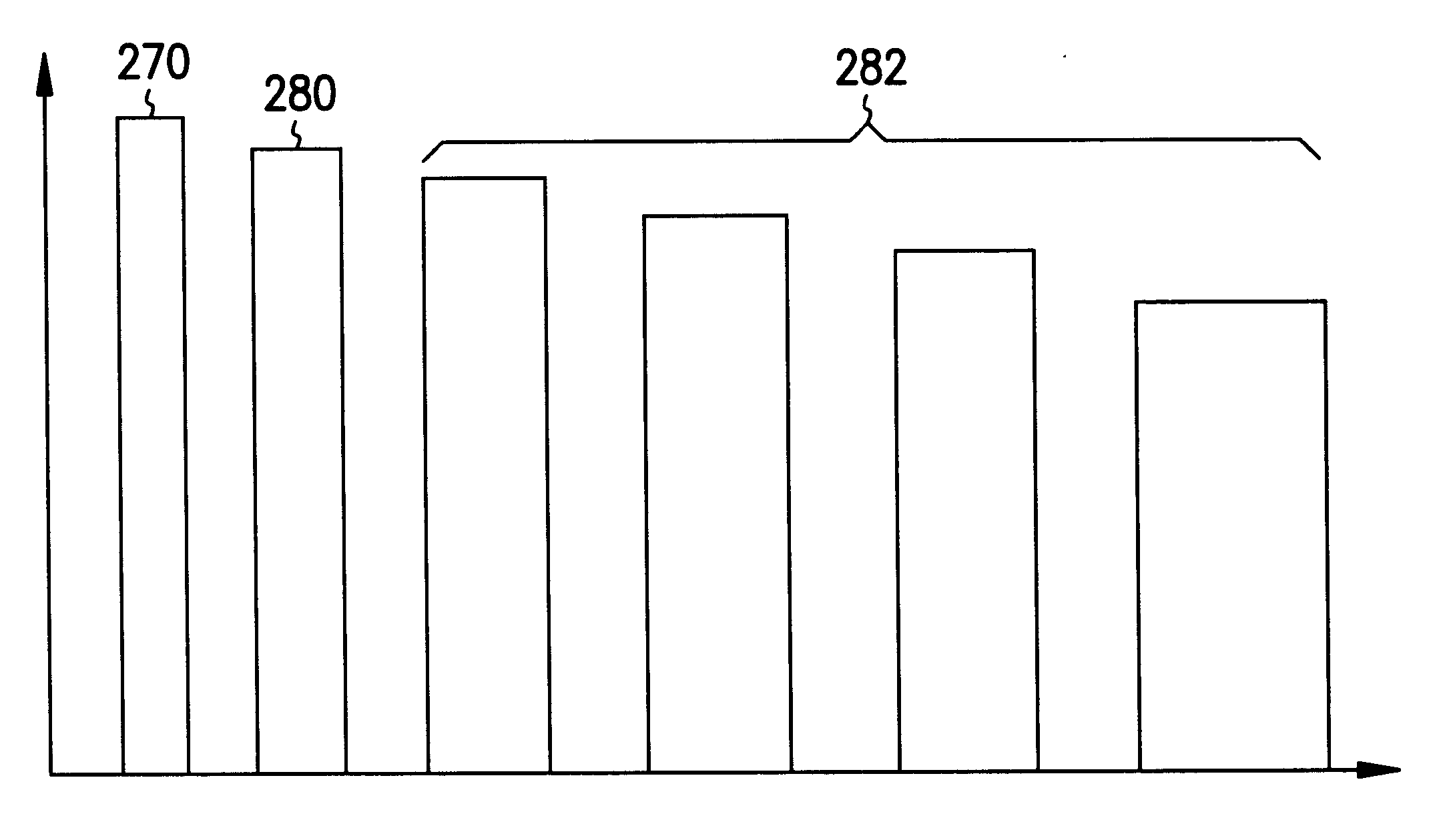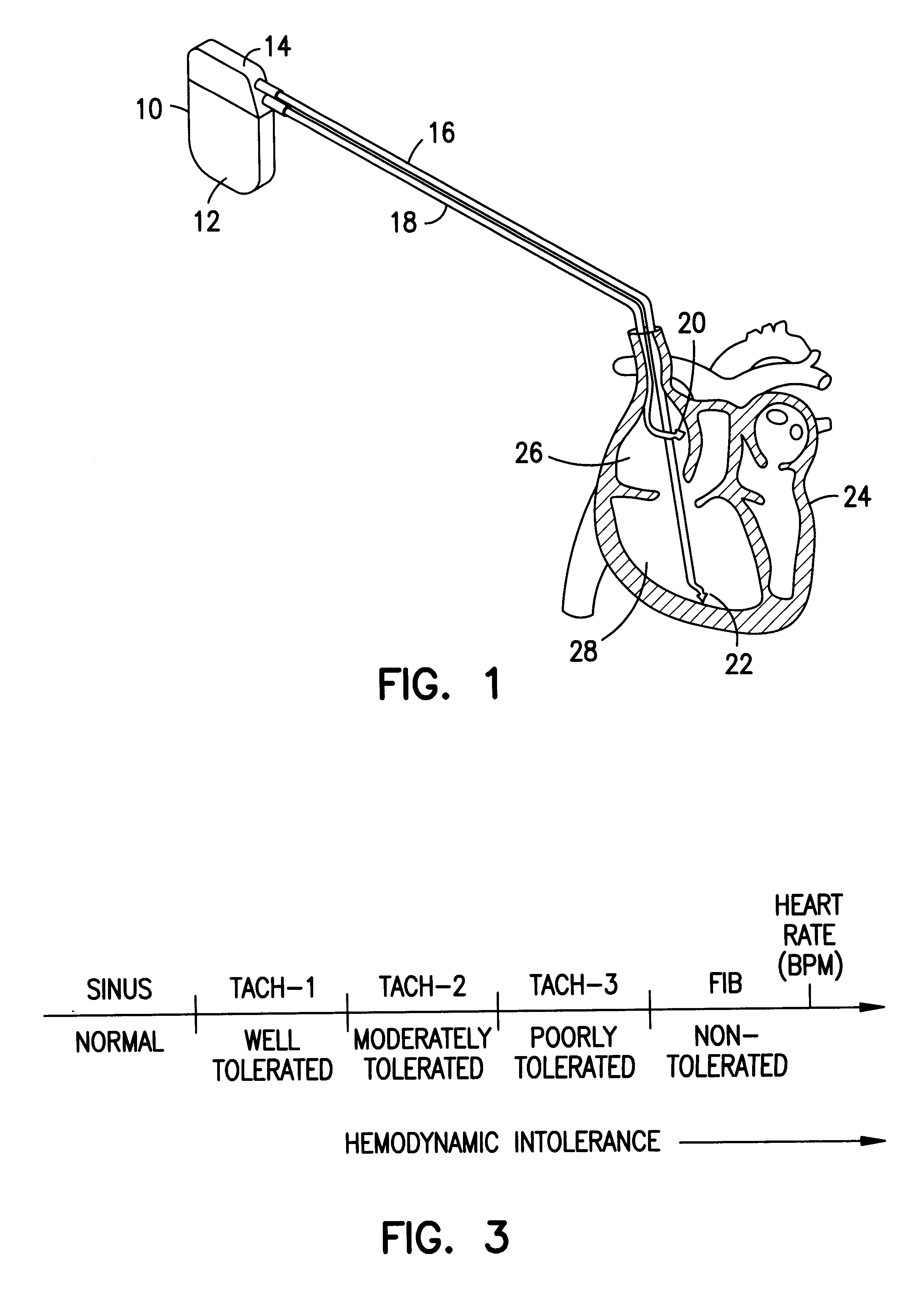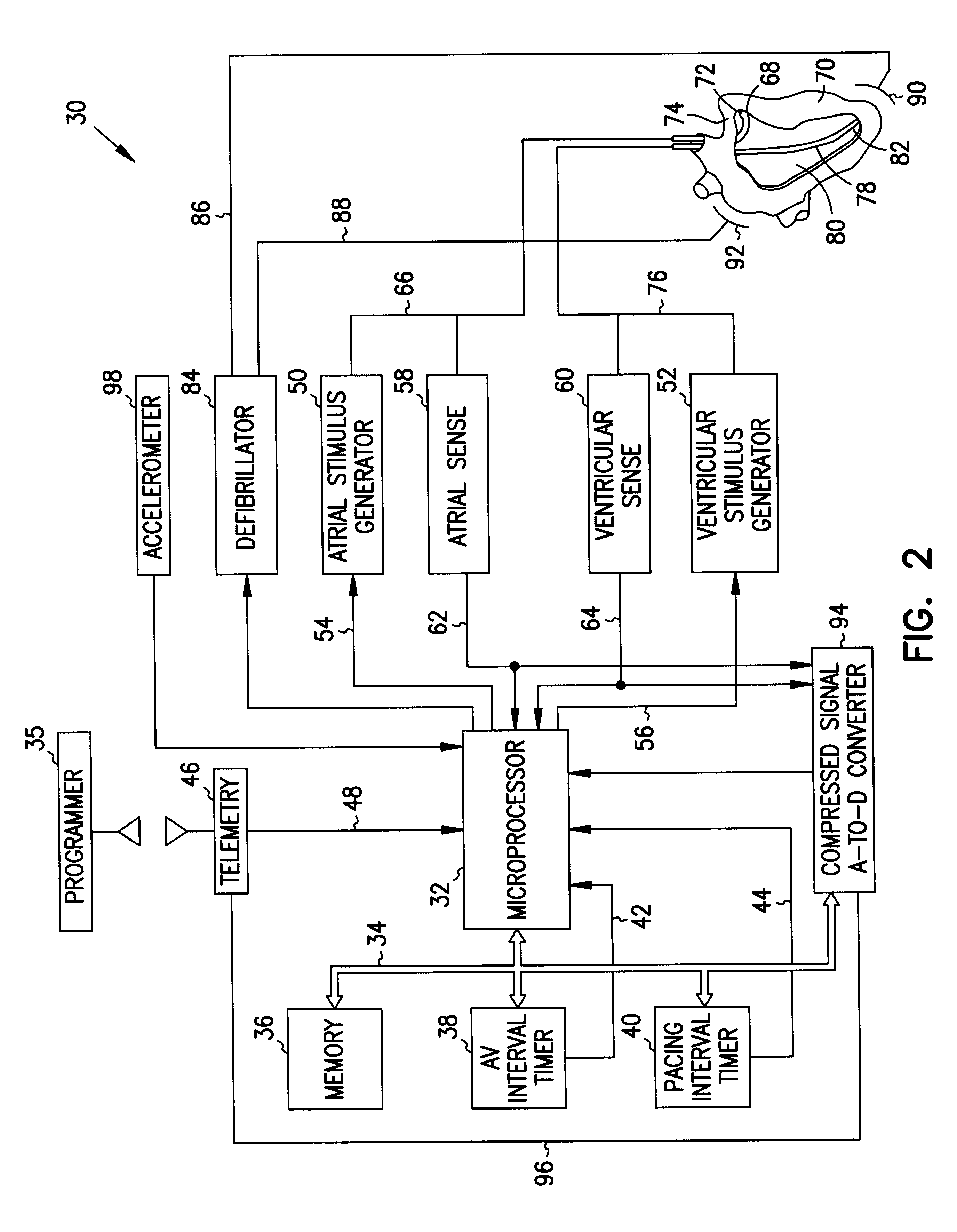Methods and apparatus for treating fibrillation and creating defibrillation waveforms
- Summary
- Abstract
- Description
- Claims
- Application Information
AI Technical Summary
Problems solved by technology
Method used
Image
Examples
Embodiment Construction
Turning now to the drawings, and referring initially to FIG. 1, one embodiment of a dual-chamber cardiac stimulator is illustrated and generally designated by the reference numeral 10. As discussed below, the cardiac stimulator 10 advantageously includes a defibrillator circuit that produces one or more waveforms for treating a detected fibrillation. The general structure and operation of the cardiac stimulator 10 will be discussed with reference to FIGS. 1-3. Then, various waveforms for treating fibrillation will be discussed with reference to FIGS. 4-32. Once these waveforms have been described, various exemplary methods and circuits for creating these waveforms will be described with reference to FIGS. 33-37.
As shown in FIG. 1, the body of the cardiac stimulator 10 includes a case 12 and a header 14. The cardiac stimulator 10 may be implantable or non-implantable. If implantable, the case 12 and the header 14 are hermetically sealed to prevent bodily fluids from damaging the inte...
PUM
 Login to View More
Login to View More Abstract
Description
Claims
Application Information
 Login to View More
Login to View More - R&D
- Intellectual Property
- Life Sciences
- Materials
- Tech Scout
- Unparalleled Data Quality
- Higher Quality Content
- 60% Fewer Hallucinations
Browse by: Latest US Patents, China's latest patents, Technical Efficacy Thesaurus, Application Domain, Technology Topic, Popular Technical Reports.
© 2025 PatSnap. All rights reserved.Legal|Privacy policy|Modern Slavery Act Transparency Statement|Sitemap|About US| Contact US: help@patsnap.com



